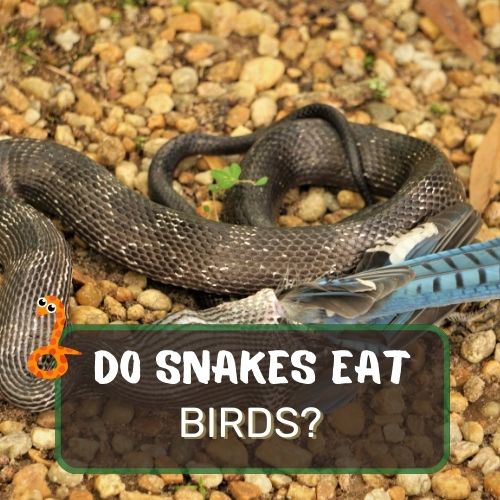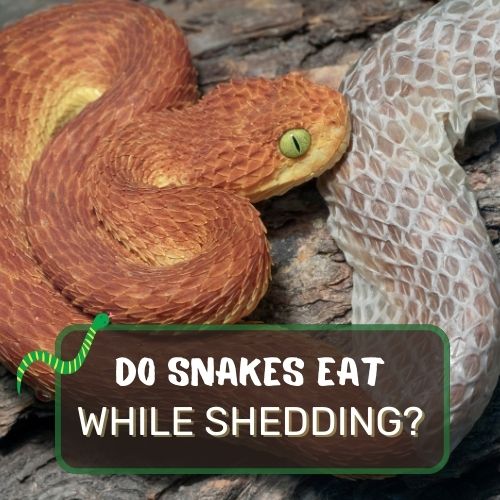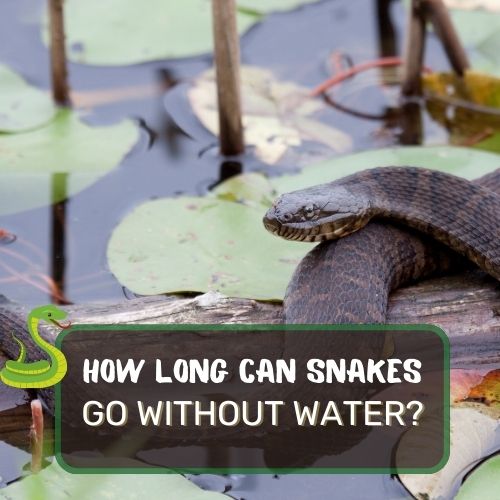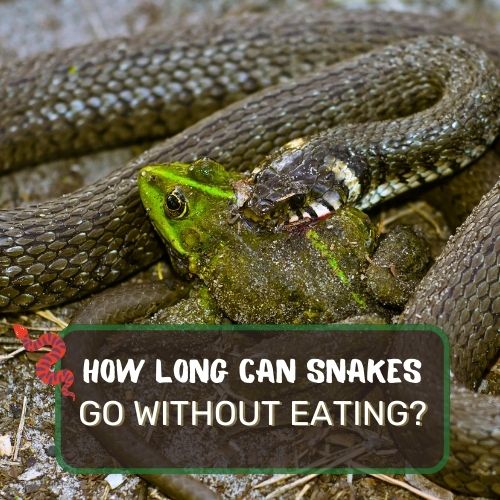
Are snakes natural predators of birds?
This article delves into the intriguing world of snakes and their dietary habits, shedding light on the captivating interactions between these reptiles and avian species.
By examining the factors influencing snake-bird interactions, readers will gain a comprehensive understanding of how snakes have evolved to catch and consume birds as a significant part of their diet.
From the incredible adaptations of snake species to the strategies employed during hunting, this article will provide valuable insights into the often-overlooked relationship between snakes and birds in the wild.
Whether you’re a curious nature enthusiast or simply seeking to expand your knowledge of the animal kingdom, this article promises to satisfy your quest for intriguing revelations.
Table of Contents
Do snakes eat birds? (Yes, They Do)
In short, yes, snakes do eat birds! Various snake species have been observed hunting and consuming birds, making this a remarkable aspect of their feeding behavior. However, the extent to which birds contribute to a snake’s diet can vary depending on the species, habitat, and the availability of other food sources.
Snakes and Bird Feathers

One intriguing aspect of snakes’ diet is their relationship with bird feathers. Let’s explore whether snakes eat bird feathers and some possible reasons behind this behavior.
Do snakes eat bird feathers?
Snakes are known for their remarkable ability to swallow their prey whole. When it comes to birds, they consume not only the flesh but also the feathers.
While this might sound peculiar at first, it serves a purpose beyond simple nourishment.
Potential reasons why snakes might consume feathers
The consumption of bird feathers by snakes can be attributed to various factors. One reason is that feathers, being lightweight and digestible, can be easily ingested along with the bird’s flesh.
Additionally, feathers might aid in the snake’s digestion process by providing traction and assisting in the movement of prey through the digestive tract.
Another plausible explanation is that feathers contain essential proteins and nutrients that complement the nutritional value of the bird’s meat, contributing to the snake’s overall health and growth.
Furthermore, the presence of feathers in a snake’s diet might be influenced by environmental factors.
In regions where birds are abundant and represent a significant food source, snakes may naturally consume more feathers as part of their regular diet.
Snakes do eat birds, and their consumption of feathers is a fascinating aspect of their feeding behavior.
As with any ecological study, the relationship between snakes and their avian prey is a multifaceted one, influenced by a combination of factors that shape the survival strategies of both predators and prey.
Understanding these interactions not only enhances our knowledge of the natural world but also reminds us of the delicate balance that exists within ecosystems.
So, the next time you hear a snake rustling nearby, you might wonder if it’s on the hunt for a feathered feast!
Snake Species That Eat Birds

While snakes are not exclusively bird eaters, some species have demonstrated a clear inclination towards avian prey.
Let’s explore the characteristics of these snake species that make them adept bird hunters and some specific examples of documented bird-eating snakes.
Various snake species that have been observed eating birds
Numerous snake species across the globe have been observed preying on small birds.
For instance, the Black Mamba (Dendroaspis polylepis) of Africa is renowned for its incredible speed and agility, allowing it to hunt and consume small birds with ease.
The Coachwhip Snake (Masticophis flagellum) in North America is another adept bird predator, using its quick movements to chase down its winged prey.
Characteristics of these snake species that make them capable of hunting and consuming birds
Snake species that consume birds often possess specific physical and behavioral attributes that aid in their hunting success.
For example, arboreal snakes like the Green Tree Python (Morelia viridis) have prehensile tails and excellent climbing abilities, allowing them to reach bird nests in the treetops.
On the other hand, ground-dwelling snakes like the Rat Snake (Elaphe obsolete) are skilled at ambushing birds that forage on the forest floor, thanks to their camouflage and patience.
Other specific snake species that have been documented eating birds
One well-known example of a bird-eating snake is the King Cobra (Ophiophagus hannah), the world’s longest venomous snake.
Despite being primarily known for consuming other snakes, the King Cobra occasionally includes birds in its diet, seizing them from their nests.
Additionally, the Western Diamondback Rattlesnake (Crotalus atrox) has been observed hunting small birds and rodents, utilizing its venomous fangs to immobilize its prey before swallowing it whole.
Understanding the diversity of snake species that consume birds sheds light on the intricacies of predator-prey relationships in nature.
These snakes’ exceptional adaptations and hunting strategies showcase the marvels of evolutionary biology, making the world of snakes even more captivating.
Challenges of Snakes Eating Birds

While snakes have proven to be skilled bird predators, they are not without their share of challenges when it comes to hunting and consuming avian prey.
Obstacles that snakes face when hunting and consuming birds
Birds are renowned for their exceptional agility and ability to take flight, posing a significant challenge for snakes during the hunting process.
Snakes must rely on their speed, accuracy, and camouflage to surprise and strike their feathered targets before they escape.
Moreover, birds’ instinctive alarm calls and flocking behavior can alert other nearby birds to the presence of a snake, making it harder for the reptile to remain undetected during its hunt.
Potential difficulties in swallowing a bird whole
Swallowing a bird whole can be an arduous task for a snake, especially if the bird is relatively large.
Snakes have flexible jaws that allow them to open their mouths wide, but stretching their mouths to accommodate a bird’s size can be challenging.
In some cases, snakes may encounter difficulties with the feathers and bones of the prey while attempting to ingest it.
They may need to employ various movements to manipulate the bird into a position suitable for swallowing.
Possible consequences for snakes that eat birds outside of their typical diet
Snakes are well-adapted to their usual prey items, and venturing into consuming birds that are not part of their regular diet can have consequences.
Depending on the bird species and its diet, some snakes might ingest toxins or harmful substances present in the bird’s body, leading to adverse effects.
Additionally, if birds become a primary food source for a snake population, it could disrupt the ecological balance in certain regions, potentially impacting bird populations and other prey species that play crucial roles in the ecosystem.
Snakes Eating Bird Eggs

Snakes’ appetite for bird eggs is yet another interesting aspect of their dietary behavior. Preying on bird eggs presents unique opportunities and challenges for these reptilian predators.
How snakes prey on bird eggs
When birds lay their eggs in nests, they provide a potential food source for opportunistic snakes.
Snakes can locate bird nests by scent or sight, and once found, they consume the eggs by either swallowing them whole or breaking the shells with their specialized teeth.
Snake species that are known to eat bird eggs
Various snake species have been observed raiding bird nests to feed on the eggs. Rat Snakes, such as the Corn Snake (Pantherophis guttatus), are notorious for this behavior.
Additionally, some arboreal snake species like the Boomslang (Dispholidus typus) possess slender bodies that allow them to access nests hidden high in trees.
Significance of this behavior in the ecological balance
The consumption of bird eggs by snakes can have implications for the bird populations in an area.
If the predation pressure is significant, it might affect the reproductive success of bird species, leading to changes in the distribution and abundance of avian communities.
At the same time, the presence of egg-eating snakes may also help control certain bird populations, preventing potential overpopulation in specific habitats.
In conclusion, the relationship between snakes and birds is an intricate and multifaceted one.
Snakes’ ability to hunt and consume birds, as well as their interactions with bird eggs, reveals the fascinating dynamics of nature’s predator-prey interactions and the delicate balance that exists in ecosystems worldwide.
Strategies to Prevent Snakes from Eating Birds

As snakes’ predation on birds can impact avian populations and disturb the ecological balance, implementing measures to protect bird nests from snake attacks becomes crucial.
Suggestions for protecting bird nests from snakes
One effective strategy is to install nest boxes or platforms in trees, as these structures can be placed out of a snake’s reach, making it more difficult for them to access the nests.
Additionally, placing nest boxes on poles with predator guards can further deter snakes from climbing and reaching the nests.
Physical barriers and deterrents that can be used to prevent snake predation on birds
Using physical barriers like wire mesh or netting around the base of trees can prevent snakes from climbing up and accessing the nests.
Some researchers have also explored the use of snake repellents derived from natural substances that deter snakes from approaching bird nesting areas.
Importance of maintaining a balanced ecosystem and not eradicating snakes
While it may be tempting to eradicate snakes to protect bird populations, it is essential to consider the broader ecological impact. Snakes play vital roles in controlling rodent populations and maintaining a balanced ecosystem.
Instead of seeking their complete removal, adopting coexistence strategies and targeted protection measures can help ensure the well-being of both snakes and birds within their natural habitats.
Mutual Predation: Birds Eating Snakes

While snakes are often considered bird predators, there are intriguing instances where the tables turn, and some bird species have been observed preying on snakes.
Brief discussion on the rare instances of birds preying on snakes
Birds are not typical predators of snakes, but certain raptors and opportunistic avian species have been documented engaging in such behavior, particularly when snakes pose a threat or when snakes are in vulnerable positions.
Examples of bird species known to eat snakes
One well-known example is the Secretary Bird (Sagittarius serpentarius) of Africa. This distinctive bird of prey has long legs and uses powerful kicks to dispatch snakes.
Birds like the Harris’s Hawk (Parabuteo unicinctus) in North America are also known to hunt snakes, leveraging their group hunting strategies.
Potential reasons why birds would consume snakes
Birds might prey on snakes to protect their nests and offspring from potential threats. Additionally, snakes can be a source of nourishment for some bird species, especially during times when other prey items are scarce or when snakes are abundant in their habitat.
These instances of birds preying on snakes showcase the complex interactions between species in the natural world.
Nature’s diversity and the unique adaptations of different organisms contribute to the intricate web of life, making the study of these interactions an ongoing source of wonder and discovery.
FAQ
Let’s address some frequently asked questions about the topic “Do snakes eat birds?”
Do snakes eat bird feathers?
Yes, snakes can eat bird feathers. When snakes consume birds, they often ingest the feathers along with the flesh. Feathers are lightweight and digestible, and they might provide additional nutritional value to the snake’s diet.
Can a python eat a bird?
Yes, pythons are powerful constrictors capable of preying on birds. Depending on the python’s size and the bird species, they can target and consume small to medium-sized birds. Their ability to stretch their jaws allows them to swallow birds whole.
Do snakes eat sparrows?
Yes, snakes can eat sparrows. Sparrows are small birds that may fall within the range of prey sizes for various snake species. Certain snake species, especially those with climbing abilities, can access bird nests to prey on eggs, chicks, or even adult sparrows.
Conclusion
Throughout this article, we have explored the captivating relationship between snakes and birds, delving into the intriguing behavior of snakes consuming avian prey and even rare instances of birds preying on snakes.
We have uncovered how certain snake species have adapted to hunt birds, including their consumption of feathers and eggs.
Snakes have evolved unique hunting strategies that allow them to successfully capture and consume birds, demonstrating their role as agile and opportunistic predators in nature.
As we’ve seen, the dynamics of predator-prey relationships between snakes and birds play a significant role in shaping ecological balance within their respective habitats.
While snakes’ predation on birds can raise questions about conservation and coexistence, it is crucial to consider the broader ecological context and the importance of maintaining diverse ecosystems.
Implementing strategies to protect bird nests from snakes can help mitigate potential impacts while allowing these remarkable creatures to fulfill their ecological roles.
As we continue to study the natural world and its inhabitants, the interactions between snakes and birds remain a captivating and ever-evolving area of research, reminding us of the wonders and complexities of the animal kingdom.




0 Comments